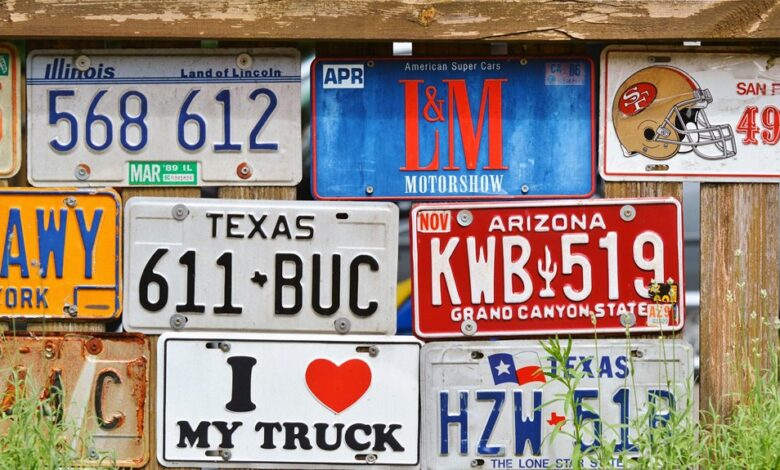Car Numbers: Exploring Vehicle Plates Across the World

Car numbers, or license plates, are often overlooked yet serve as rich cultural artifacts. They reflect local traditions, artistic expressions, and community pride. As technology advances, the production of these plates evolves, enhancing their durability and security. However, legal regulations governing their design and use vary widely across countries. This complexity raises questions about identity and the role of law in shaping vehicle registration. What stories do these plates tell about their regions?
The Evolution of License Plates: A Historical Perspective
As the automobile industry began to flourish in the late 19th century, the need for a systematic method of vehicle identification emerged, setting the stage for the evolution of license plates.
Historical milestones, such as the introduction of embossed metal and porcelain materials, marked significant advancements in plate production.
These developments not only enhanced durability but also reflected society's growing emphasis on vehicle ownership and personal freedom.
Unique Designs and Cultural Significance
License plates serve not only as functional identifiers but also as canvases that reflect the cultural identity and values of a region.
Diverse designs showcase artistic expression, from intricate patterns to vibrant colors, embodying local traditions and heritage.
This unique blend of functionality and artistry invites a deeper appreciation for the stories behind each plate, fostering a sense of belonging and pride in cultural identity.
Legal Regulations and Requirements by Country
While the aesthetic appeal of vehicle plates is often celebrated, the legal regulations governing their issuance and use vary significantly from country to country.
Registration processes can range from simple to complex, with some nations adhering to international standards, while others implement unique requirements.
Understanding these disparities empowers individuals to navigate the diverse global landscape of vehicle registration, enhancing their sense of freedom in transportation.
Conclusion
In conclusion, car numbers serve as a fascinating intersection of identity, culture, and technology, illustrating the diverse narratives that accompany vehicles worldwide. As the saying goes, "The more things change, the more they stay the same." While advancements in production and legal frameworks continue to evolve, the essence of license plates as cultural artifacts remains steadfast. Understanding these unique designs and regulations enhances appreciation for the stories they tell, reflecting the rich tapestry of global heritage.






